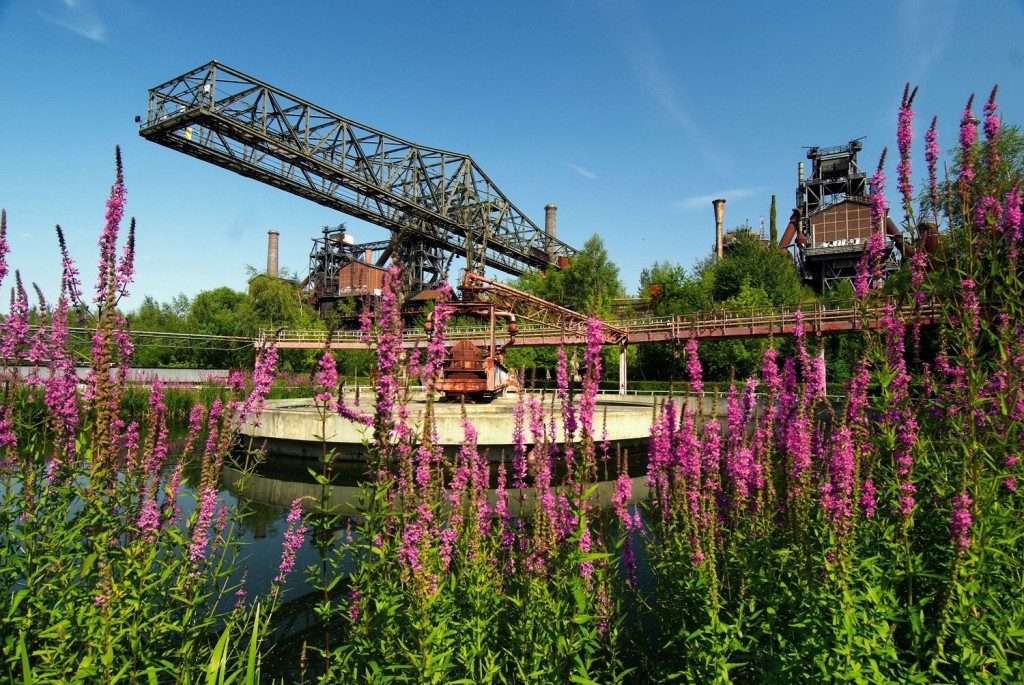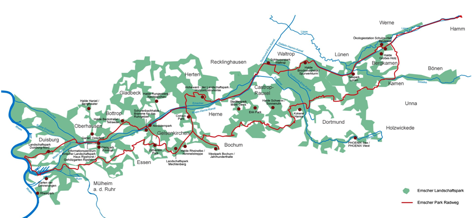
When biologists visited the abandoned parts of the large, industrial Ruhr region in the 1980s, they found special biotopes in the heavily polluted parts. Despite the heavy metals and thick layers of coal, resilient habitats had evolved, sometimes with rare plants and animals. Because of the black surface, temperatures ran up to 60 degrees Celsius in some places. The area was closed to people and the water of the River Emscher was so heavily polluted that it was unfit for recreational activities. In 1990, the federal state of North Rhine-Westphalia started the Emscher Park project. It covered a period of ten years, in which plans and ideas have been developed, and practical impetus was given to ecological, cultural, scientific and social developments in an area of 800 km2 along the Emscher River, downstream from Lippe to the River Ruhr. The catchment area of the Emscher has now been transformed from a heavily polluted open sewer into a large contiguous landscape park. Canals were removed, banks were restructured and new vegetation was planted, so that the Emscher and the plants can slowly clean the contaminated soil. The industrial heritage of the heavy industry that once characterized the Ruhr region has become part of the park with new functions for old buildings and ‘industrial nature’ overgrown by vegetation. New nature that might be less exotic, but that people can now at least visit safely.
-Ruhr Region (D) from1990
-IBA, North-Rhine-Westphalia
more info: metropoleruhr
